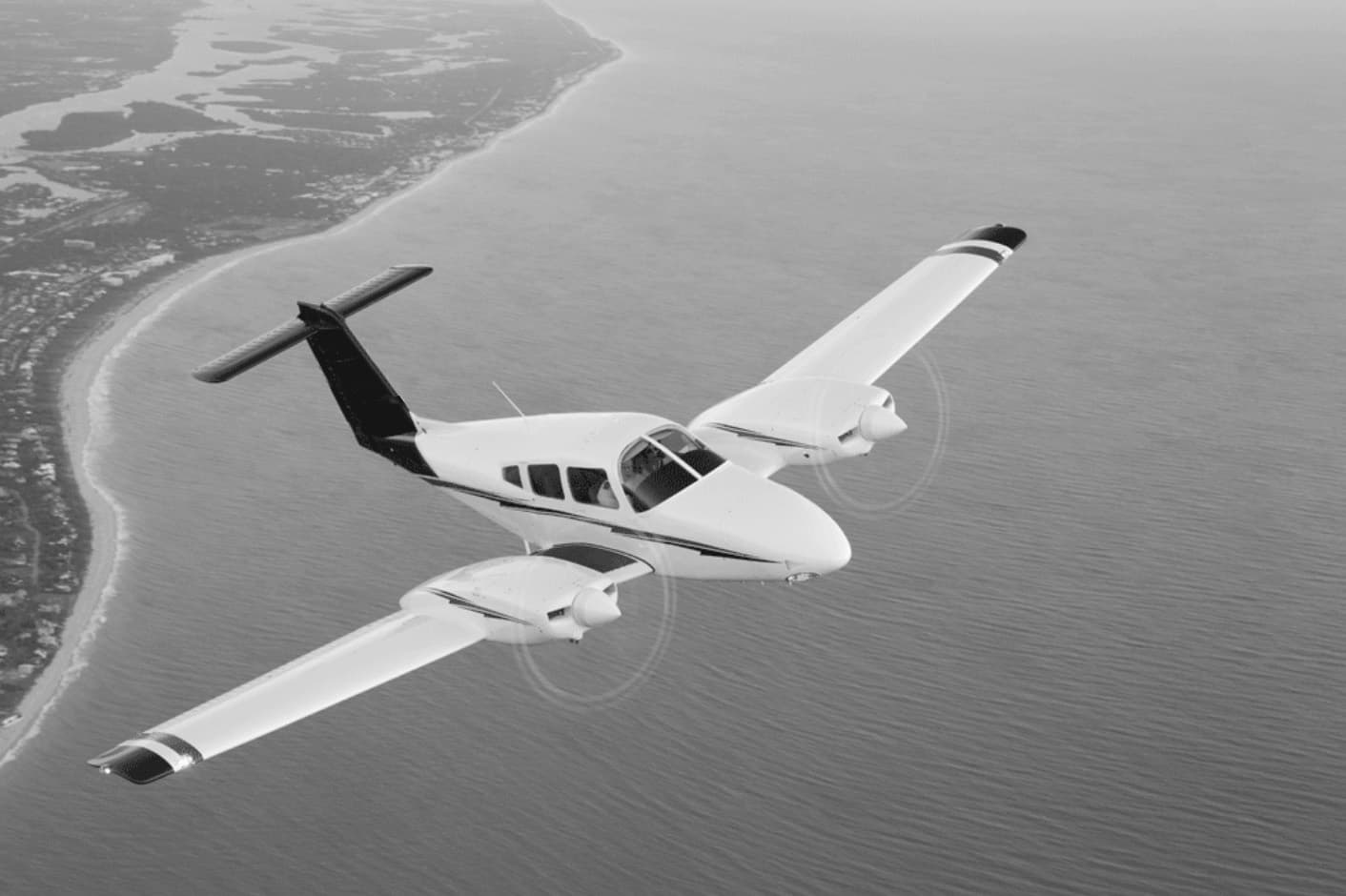WHAT IS AN INSTRUMENT RATING?
The Multi Engine Instrument Rating enables pilots to fly a multi engine aircraft as pilot in command in Instrument Meteorological Conditions (IMC).
An instrument rated pilot with the aid of navigation instruments can operate in marginal weather with lower visibility in rain, snow, cloud and at night.
The Instrument rating course syllabus includes a mix of training on simulators, single engine Cessna-172 and twin-engine aircraft like the Piper Seminole PA44.
On completion of this course you can act as pilot in command on aircraft of the same category, single pilot.

You must already hold a Commercial Pilot Licence (CPL) or Private Pilot Licence (PPL), to conduct an Instrument Rating course in Australia.
It is also recommended you complete the IREX theory exam prior to starting the Instrument Flight Rules (IFR) flight training component.
The approaches that will be covered in your IFR training will be –
- NDB
- VOR
- GPS (RNAV)
- ILS
- DME
INSTRUMENT RATING LESSON PLANS
Step 1: IREX Theory
Theory lessons are conducted using the CASA IREX syllabus. Topics will include but not limited to:
- The principles of IFR operations
- Accuracy and limitations of navigation aids
- Aircraft systems
- Human factors
- Meteorology
The IREX exam is a 3.5 hour exam presented in a multiple choice question format, covering all IREX theory topics.
A 70% pass mark is required to proceed with Instrument Rating training.

Step 2: Multi-Engine Training (If required)
If you do not hold a Multi-Engine aeroplane rating, then this will will mark the start of your training in one of our multi engine aircraft.
The training will include both simulator and aircraft training in the Piper Seminole PA44 and will include:
- Multi-engine aircraft handling
- Asymmetric operations (Flying on one engine)
- Navigation

Step 3: Instrument Training (Simulator)
Simulator Instrument Training will start in our PFC simulator. You will learn about instrument flying and IFR procedures.
This will allow you to master your IFR skills in a pressure free environment, without the distractions of controlled airspace, weather and traffic.
Step4: Instrument Training (Aircraft)
Aircraft Instrument training will follow the simulator training. You will now apply everything you have learnt in the real aircraft and in the real environment in either simulated IMC or real IMC weather conditions.
Your training will cover a series of planned navigation exercises with varying IFR Procedures, locations and scenarios.
You will start with simple exercises lasting 1.5 hours and build up to more complex scenarios covering flights of 3.5 hours long in a high pressure environment.
The training will cover:
- IFR preparation, planning and pre-flight
- IFR Departures
- IFR en route navigation
- IFR Arrivals and approaches
Step5: Pre-Licence Theory & Flight
Once training is complete and you pass the competency requirements you will be evaluated on your Instrument Flight Rating theory knowledge, including revision of the IREX CASA knowledge Deficiency Report (KDR) with your instructor.
You will also conduct a pre-license flight test, which will simulate the flight test condition before your final test flight with an approved CASA flight examiner.
Interair has a CASA approved in house flight test examiner.
MULTI ENGINE COMMAND INSTRUMENT RATING SYLLABUS
COURSE DURATION
So how long does an instrument rating take?
For students considering a PART TIME course we recommend a 4 – 9 MONTH time frame.
For students considering a FULL TIME course we recommend a 8 – 12 WEEK time frame.
The total time of the course including flight test is around 40 hours.
Accelerated Instrument rating courses can be arranged.
Please note this does not alter the syllabus, please get in touch for more information.
INSTRUMENT RATING COST
The flying hours quoted for obtaining a licence are based on the average hours taken by previous students and not the minimum hours. This obviously can vary depending on the student’s ability and continuity of training.
ANCILLARY ITEMS
Airservices or Jeppessen charts.
It is entirely up to the student to decide on which version they select to use during their training. We do recommend Jeppessen for students who are looking at an airline career in the future.
AIRCRAFT TYPE
Your IFR training including the night flying component (if required) is completed in our single or multi engine aircraft.
The 20 hours of the flying component is conducted in a Cessna-172 (C172) aircraft and a Piper Seminole (PA – 44) aircraft.
AIRCRAFT HIRE RATE
Cessna 172
SOLO – $215.00 plus GST
DUAL – $305.00 plus GST
Piper Seminole (PA44)
SOLO – $470.00
DUAL – $565.00
PAYMENT OPTIONS
Students pay at the completion of their lesson i.e. pay as you go.
You can elect to pay for the course upfront and receive a 5% discount.
We currently do not offer VET Fee help.
FLIGHT TRAINING
Interair flying school provides a dynamic learning environment, combining instructor expertise and a strong student focus. Our mission is to provide excellence in aviation training by creating a fun and community type learning environment.
FLIGHT INSTRUCTORS
Our flying instructors have a genuine passion for teaching, with thousands of hours of instructing experience.
They are also experienced commercial pilots with thousands of hours conducting RPT, Charter and Aerial Survey operations with some serious instrument flight time in their log books.
This experience is fed back into our training programs ensuring that you receive the highest standard of flight training possible.
Give us a call or send us an email to book a time with a flight instructor to learn more.
(03) 9374 -2133
More Information